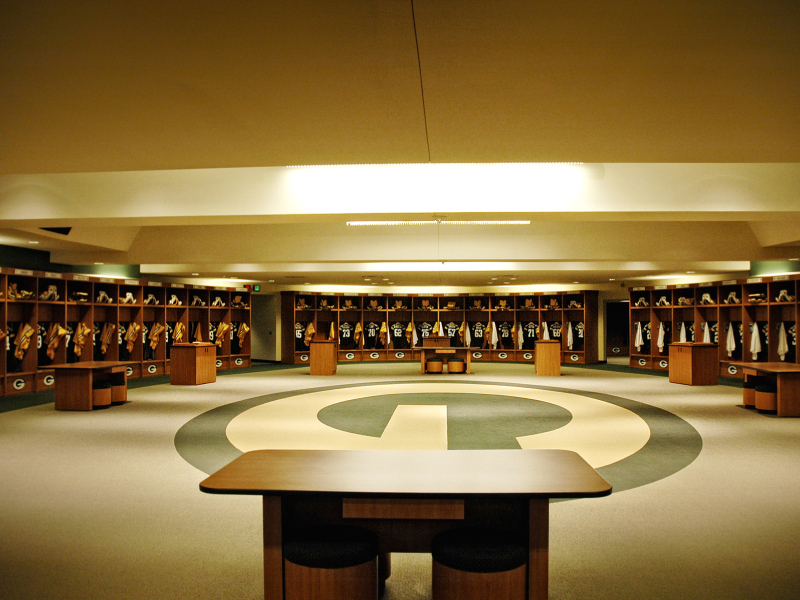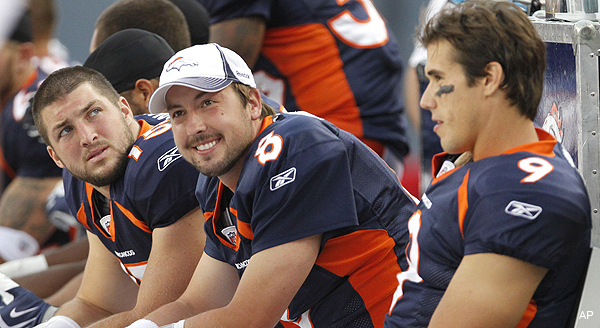
Before I start, I would like to say that I was inspired to write this post from a post regarding social science in hockey. Although hockey and football are two very different sports, the same concepts apply. While I am not as qualified to speak on specific psychological matters, I thought to take a different approach to this topic.
You can check out the post here. (I highly recommend it for any sports fan.)
The NFL’s Stubbornness with Efficiency
Throughout the evolution of sports, countless theories, strategies, concepts, and ideas have been exhibited on the best way to construct, and manage a successful team. In football specifically, different ideas of evaluating players and teams (otherwise known as “scouting”) have surfaced since the dawn of the sport. Every team wants to gain whatever advantage that it can on their opponent. This provokes the hunger to find new ways to evaluate talent, and build a winning roster. Not surprisingly, there is not a consensus on how to build a football team. Teams of all types have gained success throughout football’s history. One concept has remained since the dawn of football however, and that is the idea of leadership on a football team.
The idea of leadership is fairly simple. Certain individuals, whether coaches or players, act as leaders to promote hard work, inspiration, and determination among the rest of their teammates. Good (or poor) leadership within a team will go a long way to affect a team’s “culture.” The concept of culture and leadership (and the importance of this to the success of a team) has been under debate since teams started to play football. With the dawn of the internet, new waves of statistics and analytics have formed to evaluate football teams, and its players. The formation of a new style of analysis has caused a lot of resentment towards traditional football beliefs, such as a team making a decision based on a player’s character. A lot of this is warranted to fans. They see a select group of talented players have a negative reputation about their character and leadership arise, when some less talented players become admired more often by different football circles. Fans don’t see past the doors of locker rooms and offices, so these sentiments seem absurd. This type of information that is spread among NFL circles leads to a bigger disconnect between traditional football minds, and ‘modern’ analytical approaches. The result creates something significant that is not often treated as such:
The understanding, proper valuation, and deployment of leadership and other coaching aspects among football teams and players is the biggest market inefficiency in the NFL right now.
Having a quality culture among a football team is crucial. As an outsider, it can be frustrating to grasp this concept. Less talented players can be given credit for having strong leadership capabilities. It’s easy for somebody on the inside to say that it is “different” when someone has to function with an actual team. These ‘intangibles’ matter because these are still humans beings participating in activity. Humans are not rational, and expecting all professional athletes to reflect self-leadership, determination, and willpower is not a realistic expectation. A winning culture includes positive characteristics, such as, proper leadership, determination, and amiability between teammates. Animosity or apprehension will absolutely have a negative effect on a team’s play. Teams that are built to succeed over the long-term have quality culture established.
With that said, I can attempt explain the importance of revolutionizing the valuation of the acquisition, and deployment, of stable culture amid an NFL team.
The Acquisition
Suppose that you are a NFL head coach. Being that you are leading a rebuilding team, your coaching staff gets invited to coach one of the two Senior Bowl rosters. Senior Bowl week comes and goes. Throughout the week, you become enamored with QB ‘x’. While ‘x’ does not possess the physical tools to become a long-term NFL starting quarterback, you believe that he is somebody that you would love to have in the film room come next fall. Now let’s take a step back for a second. What would make a coach much rather that a certain player studies film with the rest of the team over other players of similar age/position? In other words, what traits would QB ‘x’ have that would make you desire him in your film room? Probably something along the lines of being attentive, studious, and understanding what he sees. Now, what is having a player with those traits worth? Could someone even put a tangible value on that? What if you could put a tangible result onto the extra diligence by ‘x’? If ‘x’ saves your starting QB from throwing three interceptions throughout the season, what is that worth to you now?
It will be worth more to some than it will to others. The effect that those extra interceptions has on your starter’s confidence, as well as extra playing time for your defense has a cost associated with it, but how much? Is QB ‘x’ saving your starter from additional negative plays worth more than drafting an athletic, high-upside, late round developmental QB instead? Would your starting QB even get along well with ‘x’? Does potential animosity outweigh the extra help in the film room? Every decision made here has an opportunity cost associated with it.
The acquisition side of building a solid culture within an NFL team probably is the more progressive side. Teams have made these decisions before, and they are able to see the cause and effect of each decision made. Teams will obviously want players to get along, and management can see when a locker room turns sour.
The Deployment
When a team is turning the page on an underachieving season, you may hear that the coach is promoting ‘toughness’ heading into the ensuing training camp. Besides the obvious coach speak, said coaching staff is promoting a message to their team. The deployment of tactics to construct a message, ultimately (or hopefully) leading to a change in culture within a team takes time, energy, and resources. Imposing a change of message that the coach himself wants may be an inefficient way to go about business. The opportunity cost of sending a message to a team is the time, energy, resources, and any other costs associated with the decision.
As a team, to professionally study the effects that different leaderships tactics entail will create a much more efficient method of creating a culture. The message that said head coach is accustomed sharing may not be what will have the best effect on the morale of the team. Sounds like a lot, right? Think about this: Every time the coaching staff tries to create a new message, the marginal benefit that the different messages have on the team decreases. Suppose that a team spends all of training camp preaching toughness and accountability. Come week one, the team loses. The same thing happens on week two. Will the coaching staff’s same old message have the same effect come week three? It likely will not.
This happens in other facets of the game too, but it happens the most (and most blindly) when coaches do not see a perfect locker room. Instead of vouching to assess the value of each decision regarding these matters, teams are still in the Stone Age of valuing a very important part to building and establishing a winning football team.
What Can Be Done?
There are statistics that will tell you a receiver’s average depth of target, a running back’s elusiveness, but there is not much to tell about a team’s mentality. By continuing to feed off of old fashioned beliefs, teams can set themselves backwards all too much. To have every aspect regarding the human nature part of a team professionally studied could net in an astounding advantage. Is there a personality type of coach that works best? Does bringing military members into team meetings to give speeches and send inspiring messages help? This might not seem like it matters much, but what about the on-field aspects?
These tweets by Brendan Leister bring up an excellent point:
Sleep: So important to peoples’ health. I often wonder if coaches would do better if they slept a healthy amount. https://t.co/fgRYvBwTbg
— Brendan Leister (@BrendanLeister) November 14, 2014
It’s sad that NFL culture says “work > sleep” so people who probably need more sleep risk their health/may even hurt their teams in process.
— Brendan Leister (@BrendanLeister) November 14, 2014
Likely. RT @PeteSmithWTFP: I agree with you. I think there are plenty of horrible coaching decisions that are sleep deprivation induced.
— Brendan Leister (@BrendanLeister) November 14, 2014
It’s almost certain that NFL coaches have overworked themselves on countless occasions throughout time. Yet nobody wants to find out when the benefit of extra preparation versus sleep starts and stops. Not only does this apply to the coaching staff, but the scouting staff. Is it really best for your talent evaluation unit to be running off of minimum sleep for extended periods of time? Evaluation likely suffers as draft season wears on. Having your scouts running on almost ‘empty’ will lead to a lower quality talent evaluation.
While watching this past Sunday’s games, I saw Matt Harmon bring up a great point as well:
Benching fumbling RBs is the most counterintuitive thing NFL coaches do. But Crowell may be the next victim of it.
— Matt Harmon (@MattHarmon_BYB) November 16, 2014
If you think pulling a fumbling RB is a good idea, you know nothing about psychological functioning. — Matt Harmon (@MattHarmon_BYB) November 16, 2014
Besides all of the behind the scenes factors that have been discussed, actual in-game coaching decisions could absolutely be improved. Benching a player to “send a message” within a game might not be the best way to instill a theme to your players. Promoting/demoting players, and the resounding effects change player performance; something that has a direct on field impact.
Bottom Line
By this juncture, it’s apparent that I have asked a lot of questions and imposed a couple example scenarios. In return, I have not given a lot of answers. There may not be one pretty statistic to sum up intangibles and culture within a team, but extensive studies of different bearings that this branch of team building can provide is potential invaluable information down the road. To date, it does not seem like any teams are interested in harnessing this data. Teams are often dead set and blinded by tradition. Teams talk about the league trending to bigger corners, or more spread offenses, but we do not hear about a team studying their locker room.
Very little visual progress has been made over the years regarding the value of the leadership/culture side of NFL teams. This includes coaching acts, such as benching a fumbling running back. Instead of treating this crucial aspect of a team as something in which analytics and other new insight, studies, and discoveries can add efficiency to, teams choose to stay in the dark with the matter. Traditional football minds try to enrich their teams with less than optimal methods. More analytic minded football minds very much drift away (and potentially mock) the idea of teams needing a proper balance of sustainable locker room culture. Instead of ignoring this facet of the game, any smart football mind should direct more attention to improve the process in which this area of the game is given.
It is easy to sympathize with both sides of the current argument. As an outsider, seeing a team keep around subpar players for their ‘intangibles’ can be frustrating and mind boggling. As a coach, it is easy to stay with tradition on how a locker room should be constructed. Neither side is completely right or wrong. In reality, the more information that can be gathered on this matter, the better off a team will be. Right now, nobody knows much.



